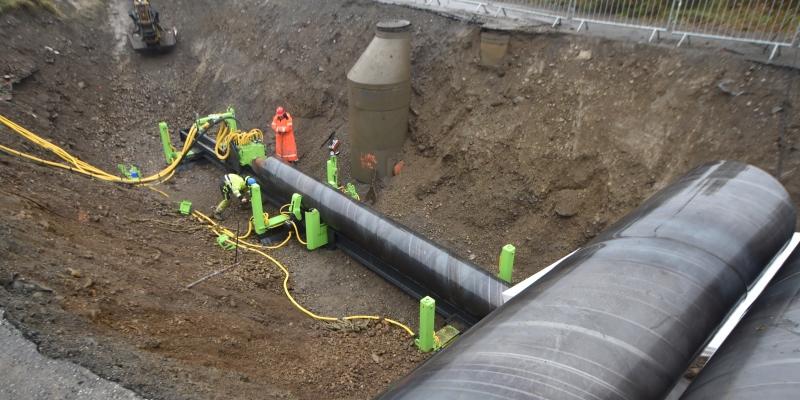På tide med skandinavisk deltakelse i NoDig Award
Publicerad: 1 augusti, 2017

Har du et spennende NoDig prosjekt på gang eller et prosjekt du mener fortjener ekstra oppmerksomhet? Da kan du melde prosjektet på til den internasjonale NoDig Award i regi av ISTT. Fristen er 15.august. Kontakt den norske eller svenske arbeidsgruppa før du sender inn ditt prosjekt til vurdering.
De norske og svenske NoDig-aktørene og kommunene har ikke vært spesielt aktive på denne arenaen, men nå oppfordrer ledelsen i SSTT i Norge og Sverige interesserte å komme på banen også på den internasjonale arena.
Leder av den norske arbeidsgruppen og viseordførende i SSTT, Borghild Folkedal, mener Skandinaviske aktører absolutt har noe å bidra med i internasjonal målestokk. Ved å delta i denne konkurransen viser vi at vi er «på» i NoDig sammenheng i våre to land, sier hun.
Bli med i konkurransen
Fra ISTT kommer det nå en klar oppfordring til skandinaviske medlemmer om å melde seg på konkurransen.
-Vi skal med glede sende over trofeet til vinneren av årets konkurranse, sier Kyoko Kondo på vegne av ISSTT.
Ved å gå inn på denne siden: http://www.istt.com/award-rules-applications
finner du konkurransereglene. Det konkurreres i fire ulike kategorier, og du må sende inn din prosjektbeskrivelse på maksimum 1000 ord til via denne nettsiden, men husk å kontakte ledelsen i SSTT først..
Siste frist for påmelding og prosjektbeskrivelse er 15.august. Vinnerne vil bli offentliggjort under den internasjonale ISSTT-samlingen i Columbia 25.-27.september i år.
Viktig informasjon
Her er viktig informasjon før du deltar i konkurransen:
Four categories are eligible to receive Awards as shown below. Awards may not be made in all categories in a given year.
- Academic research or training aid/course.
- Trenchless project completed.
- New machine, tool, material, system or technique introduced.
- Student or young professional paper - Members regularly enrolled in college or university, or spending at least half their time on academic course work
The aim of ISTT is to promote the science and practice of trenchless technology, and the Awards are to raise the profile and status of the Society and its Award Winners.All award winners (1) are recognized at the Gala dinner and presented a trophy and certificate, (2) are featured in an article in Trenchless International, (3) are added to the published list of ISTT award winner role of honor posted on the ISTT website, and (4) are authorized to use the ISTT logo on promotional material related to the award activity or recipients. In addition, the winner may be afforded an opportunity to make a brief presentation on the activity that received the award at the Conference time and schedule permitting. The student award winner receives a small cash award and limited financial travel assistance to attend the Conference.
Criteria for selection of Awards are as follows:
- Does the entry make a contribution to the advancement of trenchless technology world-wide?
- Does the entry contribute to protecting the environment and/or reduce social costs?
- Are the above benefits clear from the entry?
- Is the entry innovative, ingenious, elegant or novel?
- Is the entry commercially and economically practicable?
- Will the award make an impact with the media, decision-makers and the general public?
- Will the award impress ISTT members?
- Has the entry been well explained and presented?
Applicants for the categories of Trenchless Project and New Machines should demonstrate a practical use or development of trenchless systems or equipment for the installation or rehabilitation of underground utility networks. For example, entries may address achievements in:
- Improved economy and competitiveness of trenchless installations;
- Length and speed of drive for installation, replacement or renovation;
- Accuracy or size of installation;
- Materials used;
- Ground conditions successfully dealt with;
- Improved acceptability for clients, operators and/or environment;
- Underground detection, recording and mapping of obstacles, both natural and man-made;
- Health and safety of employees and the general public;
- Matters related to training in the field of trenchless work; and
- Research into any of the topics related to working on underground utilities.